Getting the job done at home
The evolving state of workplaces has led to a remote-friendly culture, a lot of give-and-take and self-imposed rules
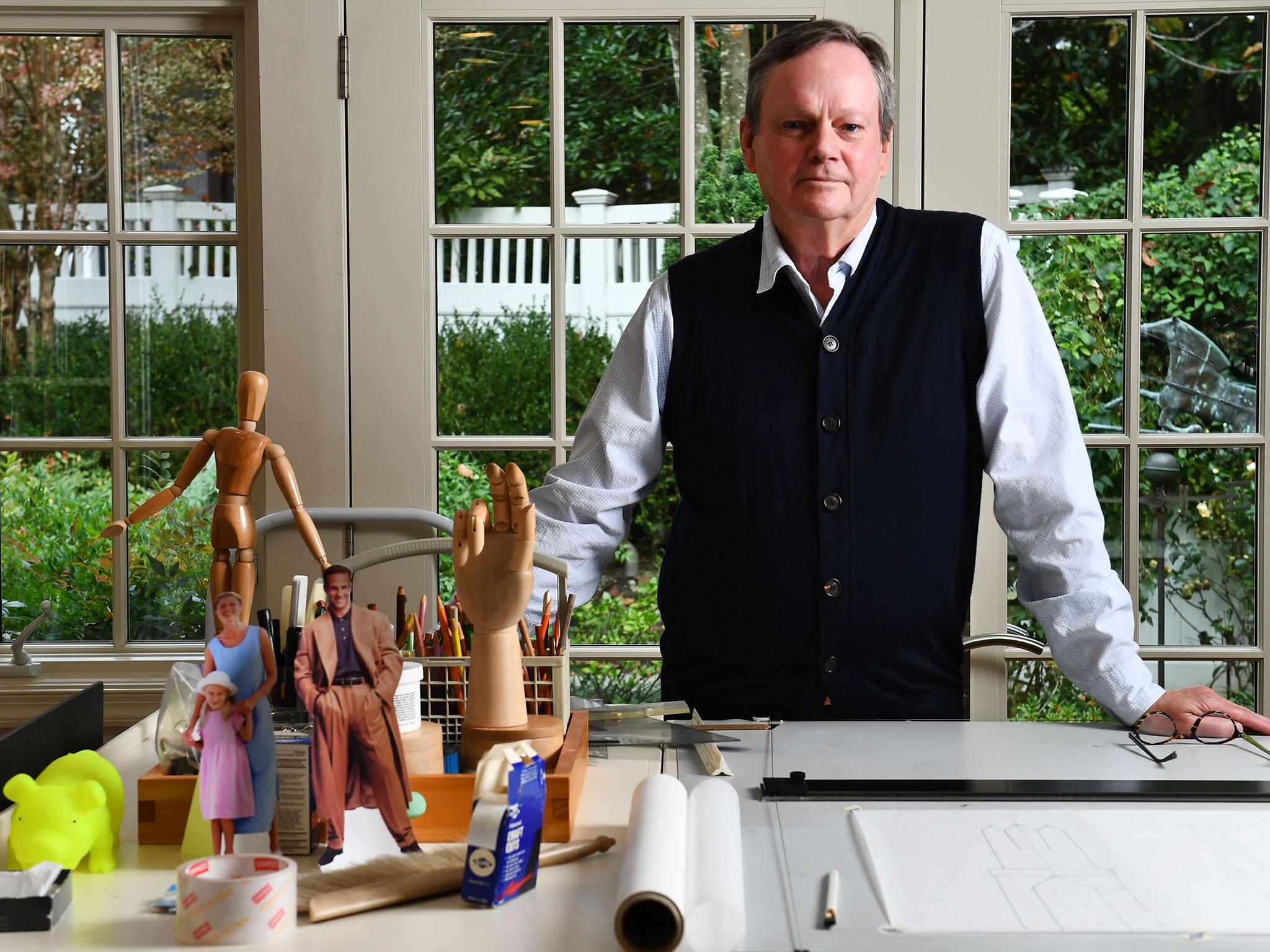
Your support helps us to tell the story
From reproductive rights to climate change to Big Tech, The Independent is on the ground when the story is developing. Whether it's investigating the financials of Elon Musk's pro-Trump PAC or producing our latest documentary, 'The A Word', which shines a light on the American women fighting for reproductive rights, we know how important it is to parse out the facts from the messaging.
At such a critical moment in US history, we need reporters on the ground. Your donation allows us to keep sending journalists to speak to both sides of the story.
The Independent is trusted by Americans across the entire political spectrum. And unlike many other quality news outlets, we choose not to lock Americans out of our reporting and analysis with paywalls. We believe quality journalism should be available to everyone, paid for by those who can afford it.
Your support makes all the difference.Working from home has become as ordinary as having a job in the first place. No one blinks at a request to go remote part time, because traditional separations between work and home are softening.
But what if you must live and work under the same roof full time? If you need a work surface the size of ping-pong table, or you need running water, or your boss at the headquarters out of town just plain doesn’t want to pay rent for your office anymore? How do you meld your working space with your home?
Jerry Zremski, bureau chief for the Buffalo News and a former National Press Club president, confronted this reality. “For years, we had a two-reporter, plus intern, bureau in the National Press Building, but in March 2010, I started working at home,” he says, sitting behind his spacious white desk. “My employers felt it made financial sense.”
“It was a big sacrifice. This was a guest bedroom,” he says gesturing around the 10-by-12-foot bright and airy room. “Now I give up my bedroom for guests.”
Years ago, Zremski renovated his two-bedroom Washington condo in Logan Circle. So he brought back Natalya Mumzhiu with NM Design Studio and asked her to rethink the second bedroom.
“I wanted it to look like an office, because if it was just me and my laptop at the kitchen table, it wouldn’t feel like work,” he says.
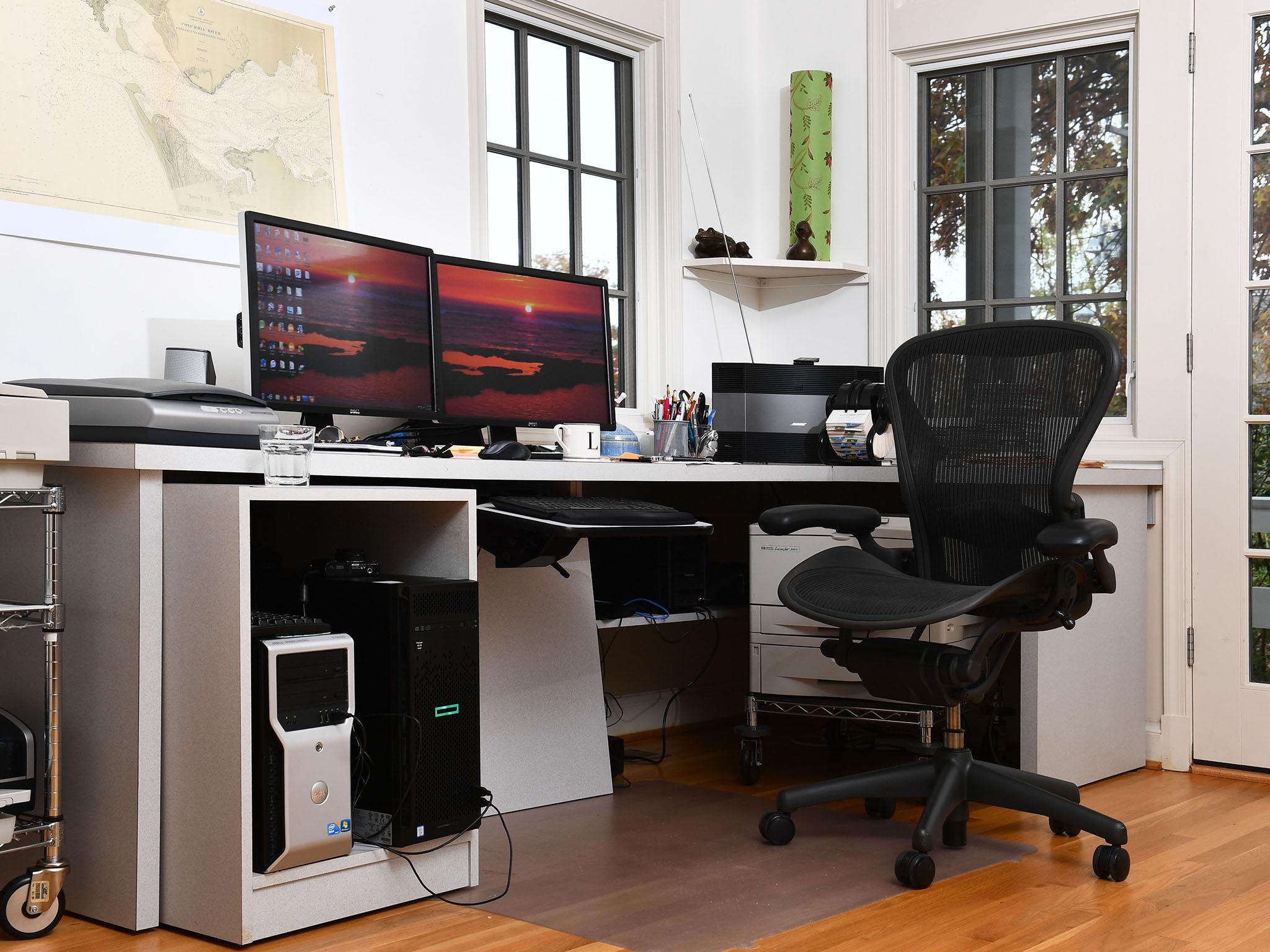
“Jerry called and said he was moving his office into the house,” Mumzhiu says. “I also work from home and know how important it is to have a pleasant, organised and professional space.”
She placed the desk perpendicular to the windows “so he could look outside all the time with just a turn of his head”.
Zremski says: “I told her I needed a lot of room for files, and she said, ‘I’ll invent something’.”
She made a desk from an Ikea kitchen countertop and set it over three file cabinets. She built wood shelves onto the walls and covered cabinets with frosted glass doors. “Glass creates a peaceful atmosphere and tricks the eye, making the space look bigger than it really is,” Mumzhiu explains.
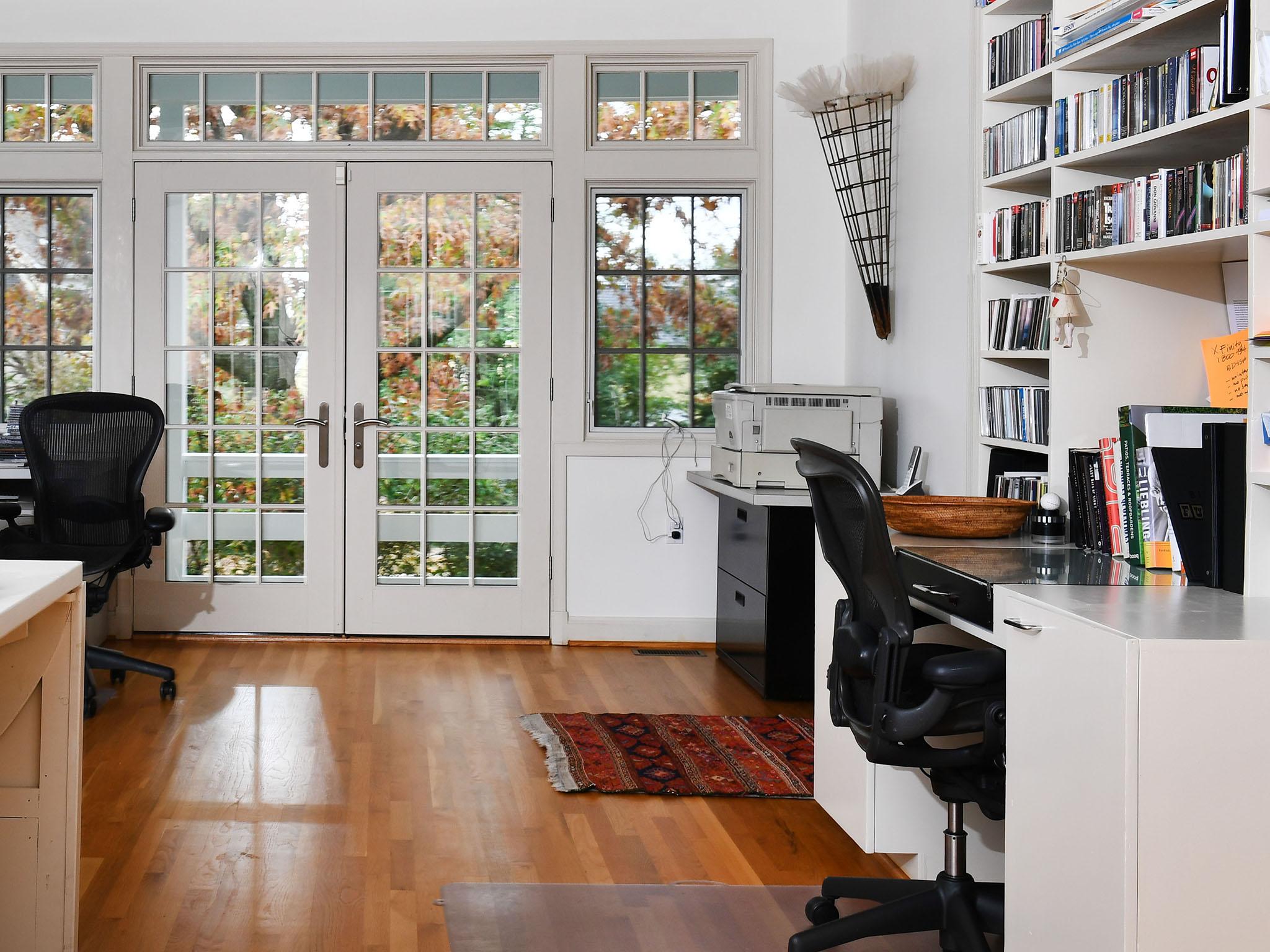
Zremski says: “This is an office 100 per cent. If you looked just at this room, you’d see an office and never guess it was in a condo.”
Artist Larry Kirkland designs monumental site-specific installations for institutions around the world. His 40-foot-high bronze doors, etched in Latin verse from the first page of Genesis in the Gutenberg Bible, form the entrance to the new Museum of the Bible in Washington.
He conceives these works in a light-filled double garage-sized studio – designed by architect Michael Lee Beidler – that joins his Washington house with translucent glass pocket doors. “So I keep the light between the two spaces,” Kirkland says.
The rectangular studio is bookended by walls of paned windows and doors that face a porch on one side and a yard on the other.
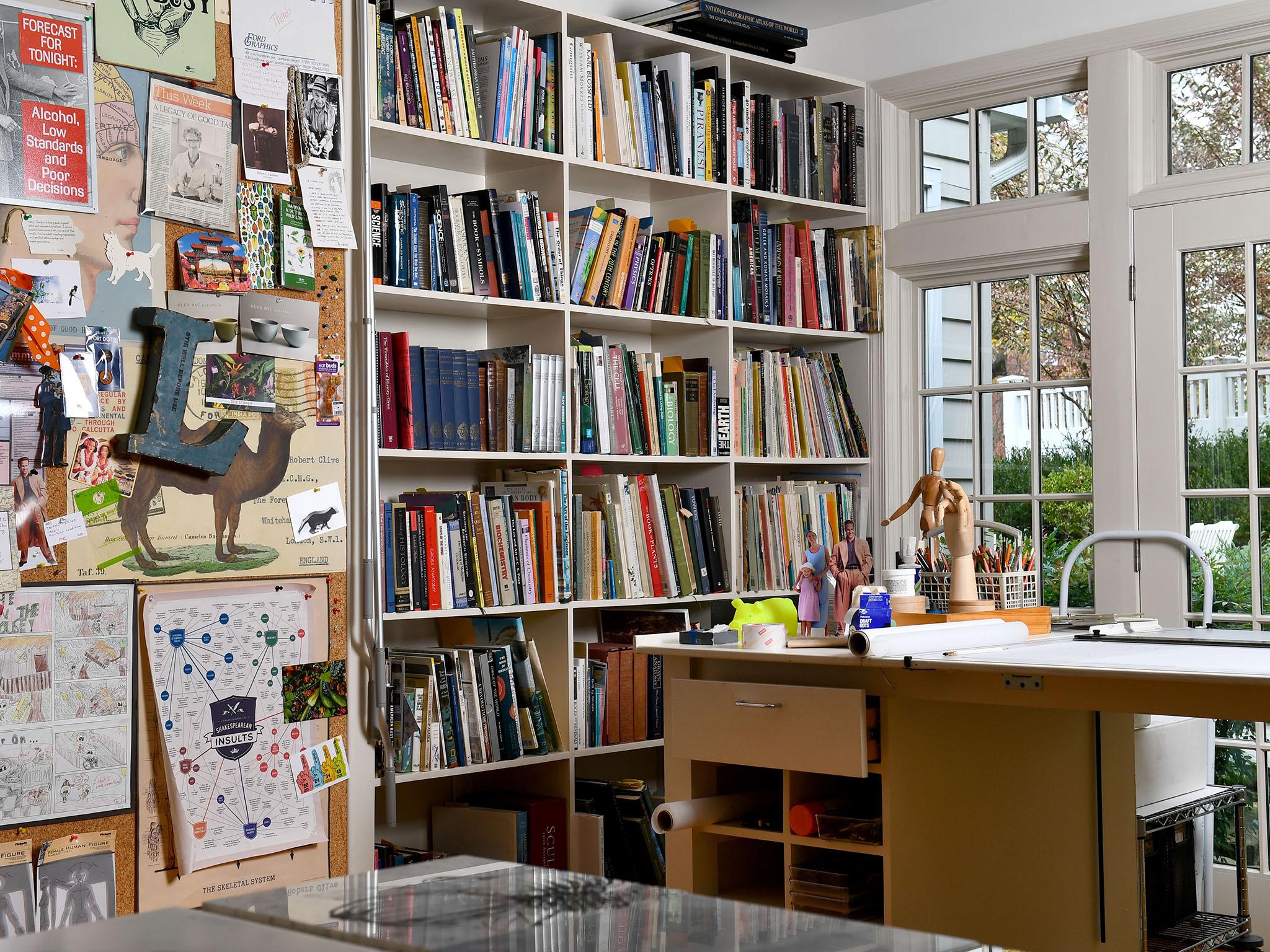
“The space is magnificent for my private working world and our home life,” he says. Kirkland lives with his partner, Brendan Doyle. “We transform it for dinner parties and holiday meals. We had Brendan’s retirement party here. That was the bar,” he says, pointing to the drafting table piled with drawings and books.
A huge eggshell-coloured metal layout table on wheels dominates the space and is Kirkland’s primary working area. They roll it onto the porch for their 30-person Thanksgiving dinner. Now it’s covered with pieces of the bronze doors, slabs of engraved granite and a model for an addition to the DC Superior Court.
The giant 9-foot-high, 18-foot-long wall behind the layout table “is my pin-up wall”. “In the future, when we sell the house – I know we won’t live here forever – a family can open up the space with a fireplace or windows,” Kirkland says.
Roommates, partners, even spouses can sometimes be problematic. “I think if one works at home, you have to separate your places and be disciplined. Now that Brendan is home more often, he’ll barge in and say, ‘Let’s have lunch.’ But I don’t want lunch. My idea of lunch is to stand at the kitchen sink, eat half a sandwich and not dirty any utensils so I don’t have to worry about cleaning up.”
Edmond van der Bijl, an entrepreneur, innovator and artist who paints, sculpts and creates video, also contends with family at home.
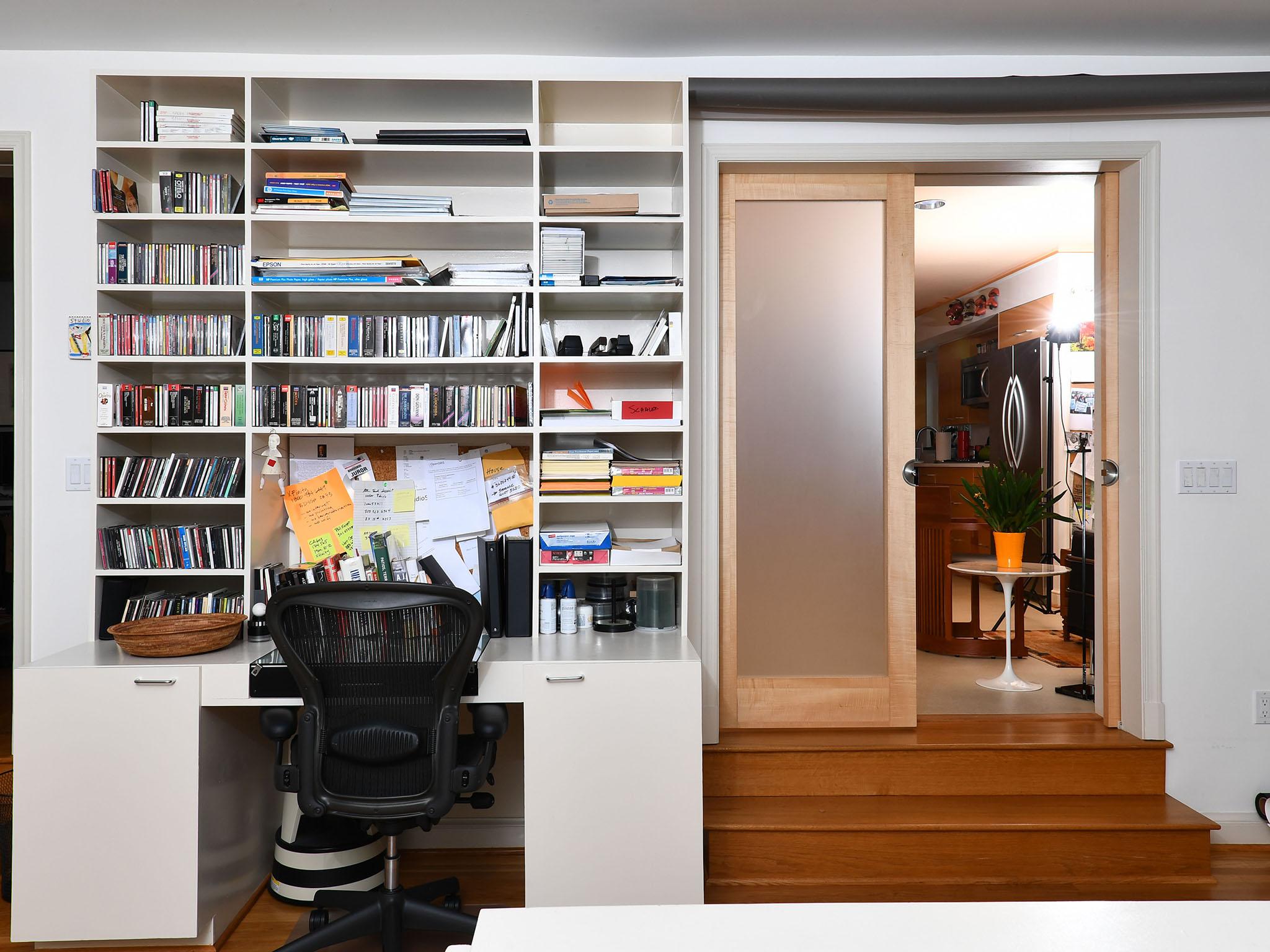
Occasionally, he rents a studio, but mostly he works from the Washington house he shares with his wife, Arianna, and two small children.
“I try to set up a little corner in a room that’s dedicated to me, where I can lock the door. But it’s not a private office or a cocoon. People walk through,” he says.
“As we speak, I can hear my son crying, and it’s killing me. Parenthood makes your life less comfortable, but artistry isn’t about being comfortable. It’s about stretching your creativity and powers of observation and getting comfortable with things not being perfect.”
Ann Lauer works in the basement of her Baltimore house. “I require a lot of tools – chisels, razor knives, awls – plus water, rolls of cane, rush, cord, rattan and wicker. It’s messy, so it’s perfect to work down there,” she says. Lauer has been weaving, caning and repairing antique chairs for 40 years.
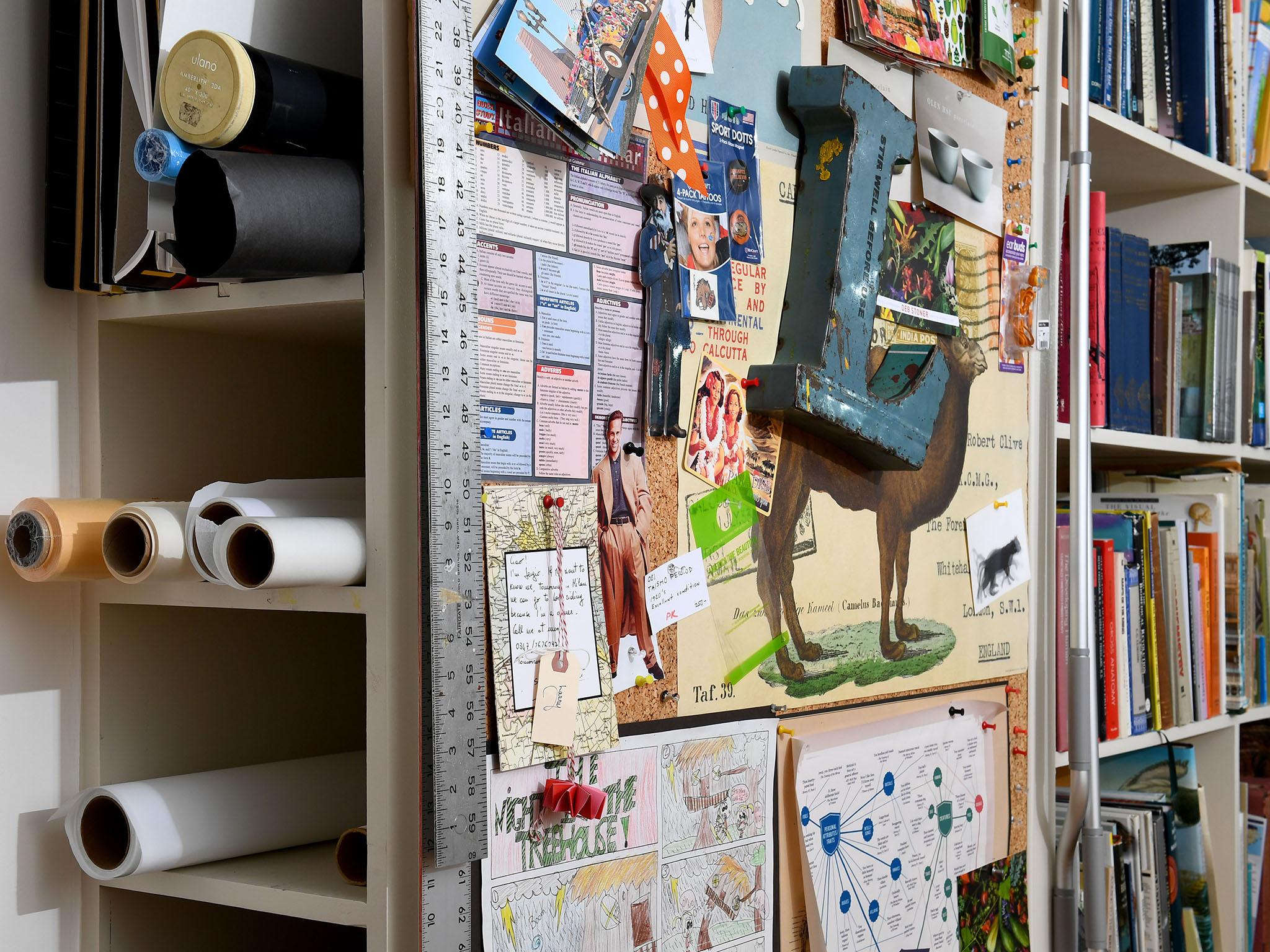
“I set up a large shop across the basement. At the back end is a sink. In the middle is a large table and lots of chairs. I have a TV because some of my work is time-consuming and tedious,” she says. “I watch movies to keep me company.”
Some people don’t even try to separate work from home. Lauer is one. “My work is always around. Customers call me all the time, evenings, weekends, holidays and occasionally at 7:30 in the morning,” she says. “I’m super-disciplined. I get up and start working. But I like my work, so it doesn’t bother me. And I have an active social life.”
Zremski tries to demarcate the end of a working day with a distinct break. He goes to the gym or meets friends. “It’s difficult to really make the separation between work and home, especially when the commute between my bedroom and desk is 10 seconds. The unavoidable result is that the personal blends with the work,” he says.

“I try not to come into my office when I’m not working, but if I need the recipe for Thai basil chicken I can’t help it,” he says, because his recipe folder is on the computer. Then, of course, he checks email.
The evolving state of workplaces has led to a remote-friendly culture, a lot of give-and-take and self-imposed rules.
Van der Bijl says: “The entrepreneurial nature of working out of the house forces you to make the most of situations that aren’t always ideal, but hustling to be creative elicits the best of people.”
© Washington Post
Join our commenting forum
Join thought-provoking conversations, follow other Independent readers and see their replies
Comments